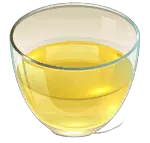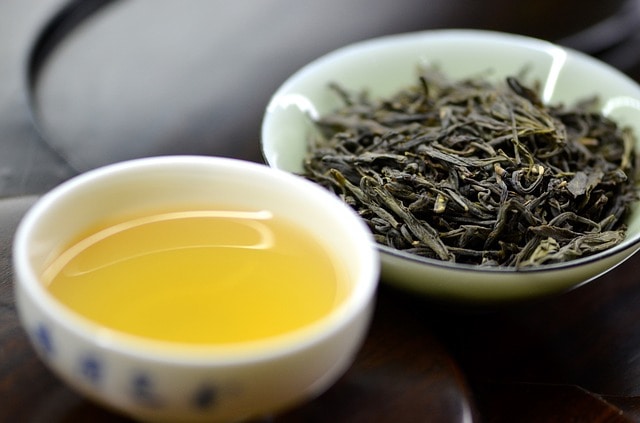
Tea leaves borne from Camellia Sinensis are quite famous around the world.
However, unless you are an avid tea enthusiast, it is unlikely that you will have heard of yellow tea too often.
This is because it is one of the rarer forms of true teas.
Nevertheless, this unique tea has quite a lot to offer in terms of taste and benefits.
If you would like to delve into the intricacies of yellow, let’s begin…
Contents
The first – and most important question to answer is: what is yellow tea?
Often referred to as huángchá, this type of tea is a native of China.
As mentioned, yellow tea is a type of true tea and is plucked from the same Camellia sinensis plant as black, green, white, and oolong tea.
In similar fashion to the other true teas, the main discrepancy with yellow tea is that it is processed in a slightly different manner.
There is quite a bit of confusion regarding the history of yellow tea.
This is because it was grown so infrequently.
Furthermore, it appears that yellow tea only ever made an appearance in regions that were well-known for their green teas.
However, there is some evidence that yellow tea only really sprung into existence during the early portion of the Qing Dynasty.
It was largely processed for locals and so, wasn’t really mass-produced.
This does help to explain why yellow tea still remains quite so unknown even today.

As stated, what sets yellow tea apart from the other teas is how it is processed.
The manner in which green tea and yellow tea are processed is quite similar.
However, yellow tea contains an additional step which results in its signature yellow hue.
This step is known as yellowing.
First, though, the plucked tea leaves go through a stage known as fixation. This is where the leaves are dehydrated through sunning, steaming, or pan-fired.
After fixation, the tea leaves are rolled – either by hand or manually.
Then, comes the yellowing. Here, the tea leaves are sealed and then steamed.
This step allows yellow to oxidize more slowly. It is also responsible for removing the grassy flavor typically associated with green tea.
Once this has been completed, the tea leaves are dried.
After processing, it is estimated that yellow tea has around 33mg of caffeine per gram of tea leaves.
Related Articles
Discover Your Perfect Beverage: Best Tea Brands on the Market
There are three main variants of yellow tea.
The variants are as follows:
Originating in the Hunan or Sichuan Province of China, these leaves are plucked “just before the rain”.
As such, the harvest time spans from early or mid-March to just before the Spring Festival.
This type of tea is slightly sweet with hints of fresh hay. It also has notes of tender corn.
It is clear that green tea and yellow tea have certain similarities.
So, let’s hone in how these teas differ from one another.
Now, some people aren’t able to digest green tea all that easily. Others simply don’t like the taste.
Well, this is where yellow tea comes in.
It is quite a bit milder than green tea and so is easier on the digestive system. It is also more pleasant tasting as there isn’t a strong, grassy taste.
On the surface, it may appear that there is just one step that separates yellow tea from green tea.
Thus, it is only natural to wonder why this tea is quite so rare.
Well, this step is rather time-consuming and is a bit more complex as well.
As a result, tea manufacturers have to invest more time and expertise when producing yellow tea.
Fortunately, it does appear that yellow tea is gaining a bit more interest from tea drinkers around the world.
Due to this, it may become more readily available in the future.

Yellow tea does have a multitude of health benefits.
This is largely to do with the fact that it offers up significant antioxidant activity.
However, let’s take a closer look at how yellow tea can benefit your health:
One scientific study shows that yellow tea helps to reduce the risk of liver injury.
In fact, it was better equipped at this than any other kind of true tea.
The news gets even better, though. There is some evidence that yellow tea can protect your liver from tumors in the form of hepatocarcinogenesis.
This could mean that it may just be able to prevent certain types of cancer.
Inflammation in the body can lead to a large number of medical conditions and chronic illnesses.
Fortunately, yellow tea does seem to have an impact on various types of inflammation.
In doing so, yellow tea can help to reduce the risk of gastric injury.
There is scientific evidence to prove that yellow tea may be able to benefit your weight loss efforts.
However, this tea does more than just help you to lose. It also makes you healthier as a whole.
Results showed that yellow tea works to lower hyperglycemic levels while simultaneously reducing lipid levels around the body as well.
It is clear by now that yellow tea is a rather distinguished and rare tea.
Thus, selecting it can seem rather overwhelming.
In this instance, it is important to not skimp on your tea.
Rather, look to well-known tea manufacturers when buying yellow tea leaves.
Since the processing is rather intricate and delicate, only renowned brands will take the trouble to really invest in the procedure.
Yes, you may have to pay a little bit more, but this will be worth it.
You will be able to enjoy a better flavor and far more health benefits as well.
On a similar note, look for yellow teas that have been grown in the Hunan and Sichuan Provinces as they should be the best.
You should also pay attention to the harvest times and pick teas that have been picked from early to mid-March and before the commencement of the Spring Festival.
There is no denying that there are several health benefits to drinking yellow tea.
Nevertheless, it is important not to over-indulge.
As yellow tea is a true tea, it does contain caffeine. And, drinking too much caffeine can cause restlessness or even sleep difficulties.
It should also be noted that the research on yellow tea is limited. Thus, it can be difficult to know it may affect you.
If you have a particular medical condition or are taking any medication, make sure to consult your doctor before drinking yellow tea.
They may ask you to moderate your intake of yellow tea.
For the best tasting yellow tea, you need to know the right way to steep the leaves.
The first thing to focus on is the water quality. Whenever possible, use filtered or bottled water.
This will preserve the true flavor of the tea.
You should also only use water that has been heated to 75 degrees Celsius.
Measure out about a teaspoon of yellow tea for every cup of tea.
When steeping it, keep the leaves in the water for around 3 minutes.
With high-quality yellow teas, you will be able to re-steep the teas. However, you should be prepared for the milder flavor.
Yellow tea has a truly delightful taste and has a hint of sweetness.
This is why it is best to take it plain, without any milk or sugar. These ingredients will only have a negative impact on the health benefits of the tea.
If you find yellow tea to be too bitter, you may want to try adjusting your brewing methods.
For one thing, make sure that the water isn’t too hot.
You should also check that you aren’t steeping the tea leaves for too long. Try shorter time periods to see if a milder version tastes better to you.
If you would like, you can also use fewer tea leaves in each cup.
The best way to ensure a delicious cup of yellow tea is to buy high-quality teas. These can often make all the difference.
This is what you need to know about the elusive yellow tea. As you can see, there is quite a bit to uncover about this tea.
It is a rather fascinating variant of the Camellia sinensis plant. Hopefully, it will grow more popular in the future.
If you enjoyed this post, check out our Pinterest page. We have lots of similar posts that you are sure to be interested in.
